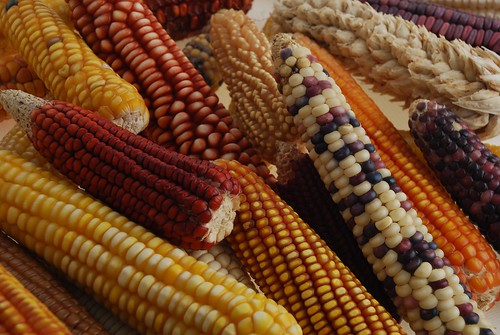What are cultivars, clones and landraces?
Different types of rice from the collection of IRRI’s International Rice Genebank.
What is a cultivar?
A cultivar is a plant or grouping of plants selected for desirable characteristics that can be maintained by propagation. For example, rice cultivars are often classified by their grain shapes and texture, for selected for characteristics such as texture, smell, and firmness, or for agronomic properties such as adaptation to deep flooding or dry land cultivation. The largest collection of rice cultivars is at the International Rice Research Institute in the Philippines, with over 100,000 rice accessions held in the International Rice Genebank.
The International Union for the Protection of New Varieties of Plants offers legal protection of plant cultivars to people or organisations who introduce new cultivars to commerce.
A clone consist of cultivars that are produced asexually, so that all the derived plant material is genetically identical. Clones includes plants propagated by division, layering, cuttings, grafts, and budding. Bananas and cassavas, two of the most important sources of food in the African continent, are both propagated by cuttings and hence clonal.
 What is grafting?
What is grafting?
Grafting is a horticultural technique whereby tissues from one plant are inserted into those of another so that the may join together.
In most cases, one plant is selected for its roots (the stock or rootstock) and the other plant is selected for its stems, leaves, flowers, or fruits (the scion) The scion contains the desired genes to be duplicated in future production by the stock/scion plant.
A wild rice variety growing in Caranavi, Bolivia. Credit: Neil Palmer, CIAT.
What is a plant variety?
Legally, a plant variety is a term applied to plants for which patent protection has been applied.
Plant breeders’ rights (PBR), also known as plant variety rights (PVR), are rights granted to the breeder of a new variety of plant that give exclusive control over the propagating material (including seed, cuttings, divisions, tissue culture) and harvested material (cut flowers, fruit, foliage) of a new variety for a number of years.
Often the term variety is used to denote a plant cultivar.
What is a landrace?
Maize ears from CIMMYT’s collection, showing a wide variety of colours and shapes CIMMYT’s germplasm bank contains about 28,000 unique …
A landrace is a local variety of a domesticated plant species which has developed largely adaptation to the natural and cultural environment in which it lives. It differs from a cultivar which has been selectively bred to conform to a particular standard of characteristics. Landrace populations are often variable in appearance, but they can be identified by their appearance and have a certain genetic similarity.
Landraces have a continuity with improved varieties. The relatively high level of genetic variation of landraces is one of the advantages that these can have over improved varieties. Although yields may not be as high, the stability of landraces in face of adverse conditions is typically high. As a result new pests or diseases may affect some, but not all, the individuals in the population.






